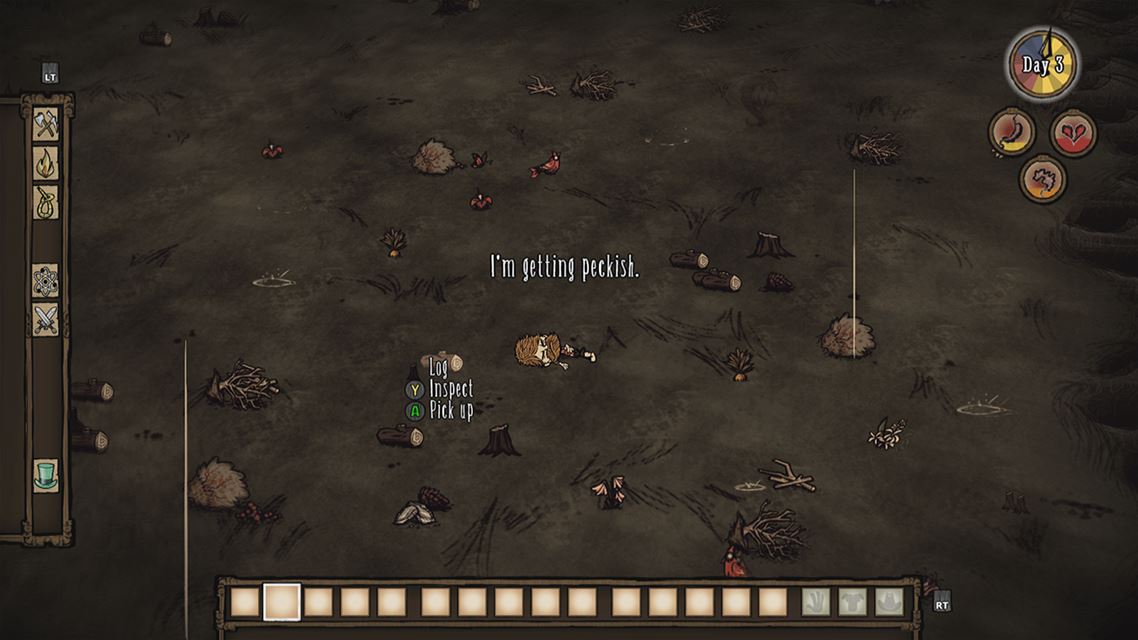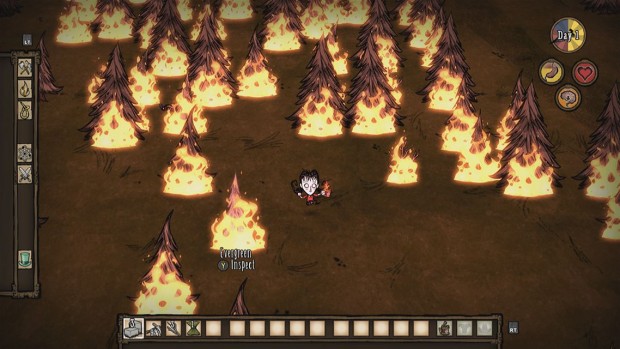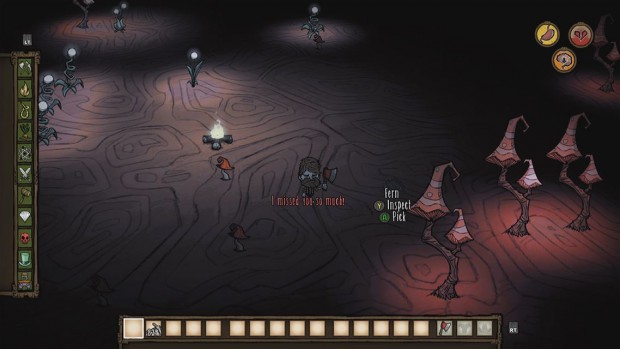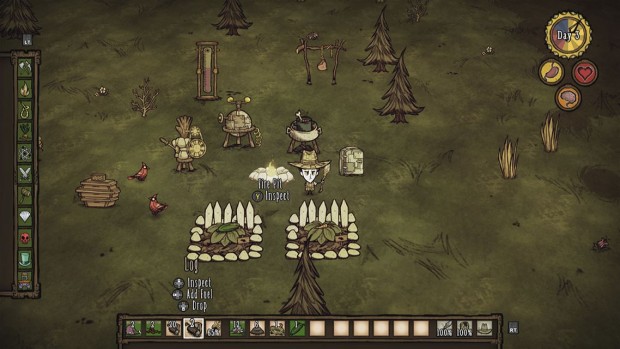The Xbox One has certainly seen no shortage of survival games lately, with titles like Sheltered and The Long Dark appearing via Microsoft’s Preview Program, and staples like Terraria and Minecraft already ported from the Xbox 360. Most games in this fairly niche genre originate on PC, and one of the most popular of those was 2013’s extremely challenging Don’t Starve.
Don’t Starve features the repetitive collection (albeit on a smaller scale) of necessities that makes Minecraft so popular and mates it with a more complex crafting system similar to — but not quite as vast — that of Terraria. This mix is presented in a beautiful, 45 degree papercraft style world that really captures the imagination of the obviously talented development team. Don’t Starve plays like a roguelike in so much as that you will die, and when you do you will lose everything you’ve gathered, crafted and created. Balancing risk and reward is absolutely key, and it’s arguably both the greatest strength, and the biggest weakness of Don’t Starve.
Here’s what I liked:
Appetising — In my opinion, Don’t Starve is one of the most individual and recognisable indie games of recent years, thanks largely to the beautiful hand-drawn characters and the rich, imaginative world that they inhabit. Everything in the world is presented with two-dimensional graphics that are beautifully animated, with the added benefit of a camera that can be rotated through four fixed viewing angles to enable players to find items hidden behind various obstacles. It’s a remarkably solid experience on the Xbox One, with no noticeable framerate drop or screen tearing, even during action-packed scenes or during camera movement.
Depth of flavour — Considering it’s somewhat cute appearance, Don’t Starve is a game featuring tremendous depth, often increasing the level of challenge organically through inbuilt features such as weather, seasons and specific challenges to seek out. There is also a considerable random element running through Don’t Starve that can see any number of terrible creatures tear through your creations — or worse still, you — or can lead the player to stumble upon environmental situations such as pitched battles between NPCs or even another underground world.
Chefs special — Crafting in Don’t Starve is simple, varied and generally rewarding, and the game features next to no items or useless collectables. Broadly speaking, the player progresses by increasing his capacity for technological advancement and. ultimately, self sufficiency. For example, whilst only basic tools can be made initially you’re given access to better items becomes possible after constructing a science machine that also allows you to plant seeds, and it’s onwards and upwards from there.
Here’s what I didn’t like:
Hard to swallow — The stiff challenge that Don’t Starve presents to players is one of its biggest draws, but after a long run, death can be a heavy, heavy blow because of the linear progression system. After death, players lose everything ahead of the next playthrough and are rewarded with nothing but a brief set of statistics about their short, in-game life. Unlike many games with this level of complex crafting and progression, however, Don’t Starve also strips players of all technology and other upgrades, so the first hour or more of any new game is often a dull slog for experienced players as they attempt to retrace their steps.
Meal for one — Considering that Don’t Starve includes the Reign of Giants expansion pack, it’s fairly inexplicable that the game’s multiplayer expansion Don’t Starve Together has been omitted from release on a console with such a strong online experience. It remains to be seen if Klei Entertainment will consider introducing other features such as this add-on later, but I certainly hope it will.
Wrap-up
Don’t Starve is a very well-polished game that makes the transition from PC to Microsoft’s console with relatively few flaws that weren’t already inherent in the game design. It’s an unusually deep survival game, but it’s also extremely tough and somewhat unrewarding in terms of Achievements and more traditional benefits like story progression. If you can take joy in the fact that you’ve survived another day; increased your capacity for self-sufficiency; mastered the elements; and crafted something useful for tomorrow, then Don’t Starve might just be the game for you.
Score: Try It
Don’t Starve was developed by Klei Entertainment and Blitworks on Xbox One and published by Klei Entertainment. It was released on August 26, 2015 for $14.99. A copy was provided by Klei Entertainment for review purposes.




